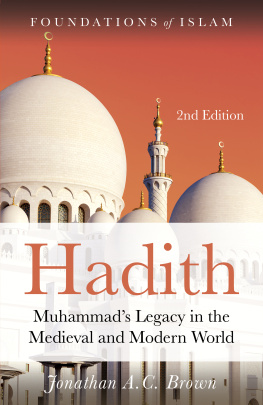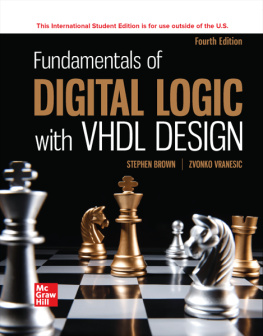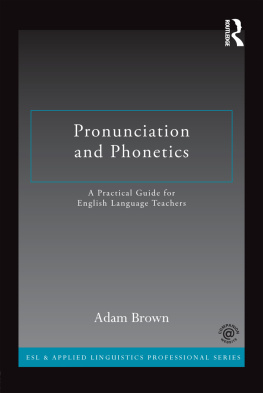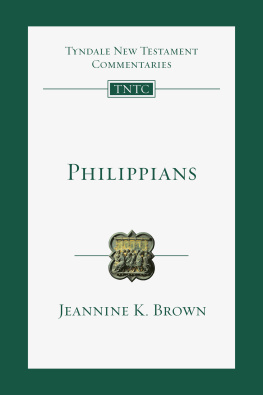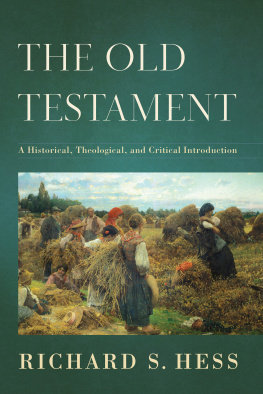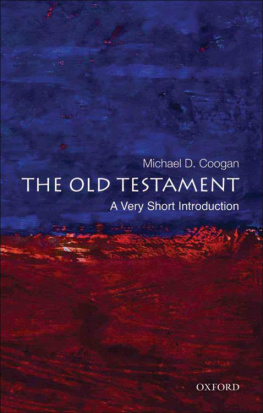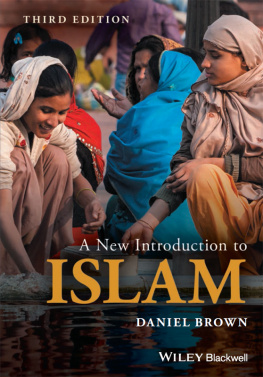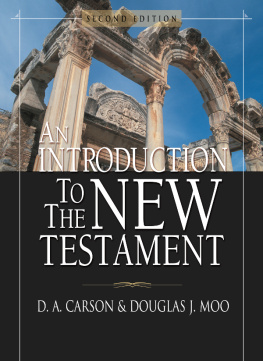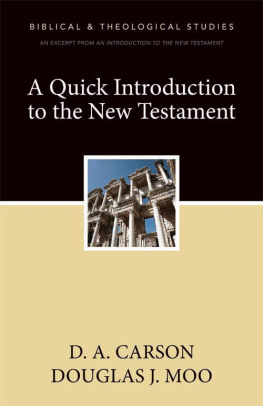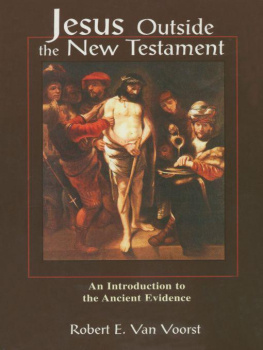Brown - An Introduction to the New Testament
Here you can read online Brown - An Introduction to the New Testament full text of the book (entire story) in english for free. Download pdf and epub, get meaning, cover and reviews about this ebook. year: 2016, publisher: Yale University Press, genre: Religion. Description of the work, (preface) as well as reviews are available. Best literature library LitArk.com created for fans of good reading and offers a wide selection of genres:
Romance novel
Science fiction
Adventure
Detective
Science
History
Home and family
Prose
Art
Politics
Computer
Non-fiction
Religion
Business
Children
Humor
Choose a favorite category and find really read worthwhile books. Enjoy immersion in the world of imagination, feel the emotions of the characters or learn something new for yourself, make an fascinating discovery.

An Introduction to the New Testament: summary, description and annotation
We offer to read an annotation, description, summary or preface (depends on what the author of the book "An Introduction to the New Testament" wrote himself). If you haven't found the necessary information about the book — write in the comments, we will try to find it.
An Introduction to the New Testament — read online for free the complete book (whole text) full work
Below is the text of the book, divided by pages. System saving the place of the last page read, allows you to conveniently read the book "An Introduction to the New Testament" online for free, without having to search again every time where you left off. Put a bookmark, and you can go to the page where you finished reading at any time.
Font size:
Interval:
Bookmark:
An Introduction to the New Testament
THE ANCHOR YALE BIBLE REFERENCE LIBRARY is a project of international and interfaith scope in which Protestant, Catholic, and Jewish scholars from many countries contribute individual volumes. The project is not sponsored by any ecclesiastical organization and is not intended to reflect any particular theological doctrine.
The series is committed to producing volumes in the tradition established half a century ago by the founders of the Anchor Bible, William Foxwell Albright and David Noel Freedman. It aims to present the best contemporary scholarship in a way that is accessible not only to scholars but also to the educated nonspecialist. It is committed to work of sound philological and historical scholarship, supplemented by insight from modern methods, such as sociological and literary criticism.
JOHN J. COLLINS
General Editor
THE ANCHOR YALE BIBLE REFERENCE LIBRARY
An Introduction to the New Testament
The Abridged Edition
RAYMOND E. BROWN, S.S.
Edited and Abridged by
MARION L. SOARDS

Yale UNIVERSITY PRESS/NEW HAVEN & LONDON
Anchor Yale Bible and the Anchor Yale logo are registered trademarks of Yale University.
Published with assistance from the foundation established in memory of Philip Hamilton McMillan of the Class of 1894, Yale College.
First edition published in 1997 by Doubleday, a division of Random House, Inc.
First Yale University Press impression 2010. Abridged edition 2016.
Abridgment copyright 2016 by Yale University.
Copyright 1997 by The Associated Sulpicians of the U.S.
All rights reserved.
This book may not be reproduced, in whole or in part, including illustrations, in any form (beyond that copying permitted by Sections 107 and 108 of the U.S.
Copyright Law and except by reviewers for the public press), without written permission from the publishers.
Yale University Press books may be purchased in quantity for educational, business, or promotional use. For information, please e-mail (U.K. office).
Designed by Mary Valencia.
Set in Joanna MT and Scala Sans type by Newgen North America.
Printed in the United States of America.
Library of Congress Control Number: 2015949082
ISBN 978-0-300-17312-3 (paperback: alk. paper)
A catalogue record for this book is available from the British Library.
This paper meets the requirements of ANSI/NISO Z39.48-1992 (Permanence of Paper).
10 9 8 7 6 5 4 3 2 1
To a remarkable group of doctoral candidates who studied at Union Theological Seminary (NYC) in the years J. Louis Martyn and I taught New Testament and who now teach me by their writings
RAYMOND E. BROWN, S.S.
To my friends and colleagues who once were doctoral students at Union Theological Seminary (NYC) when Raymond E. Brown, S.S., and J. Louis Martyn worked together to cultivate an uncommon environment for work and learning
MARION L. SOARDS
On biblical studies:
What is the literal sense of a passage is not always as obvious in the speeches and writings of the ancient authors of the East, as it is in the works of our own time. For what they wished to express is not to be determined by the rules of grammar and philology alone, nor solely by the context; the interpreter must, as it were, go back wholly in spirit to those remote centuries of the East and with the aid of history, archaeology, ethnology, and other sciences, accurately determine what modes of writing, so to speak, the authors of that ancient period would be likely to use, and in fact did use.
Divino afflante Spiritu 35
Encyclical of Pope Pious XII on Promoting Biblical Studies, AD 1943
CONTENTS
PREFACE
GOAL OF THIS VOLUME
Though the title An Introduction to the New Testament would seem to explain the purpose of this volume, a number of clarifications are necessary for readers to know what is intended. Moreover, as an abridgment of Raymond E. Browns original work, this compact version of the Foreword is meant to preserve and to re-present much of the essence of the original work for the benefit of those who may have an early interest in studying the New Testament.
First, the readership that is envisioned has implications. This book is introductory, for both readers who have become interested in the NT on their own and readers who take NT beginning courses on different levels. It aims to be a book that can give guidance the first time one reads intensively parts of the NT, and later help to consider more specific questions.
Second, this book concentrates on the New Testament, not on Early Christianity. Why? The study of early Christianity moves into church history and so is a much wider field than biblical research. The concentration here will be on the twenty-seven books accepted as the canonical NT. Such a concentration is legitimate because these writings have had a uniquely normative place in Christian life, liturgy, creed, and spirituality. Moreover, these books exist, and in that sense are more certain than conjectural, undocumented, or sparsely documented reconstructions of early Christianity.
Third, this book concentrates on the extant text of the NT books, not on their prehistory. More scholarly attention has been devoted to the NT than to any other literature of comparable length in the world, and this attention has resulted in an uncontrollably large variety of theories about sources (not preserved) that were combined or corrected to produce the books that have come down to us. Such research is fascinating; a certain percent of it presents plausible results; but none of it is certain. For an introductory book to concentrate on nonextant originals is to impose on beginning readers too much theorizing. It is far better to devote most space to what actually exists, supplying only brief guidance to the principal hypotheses about what might have been.
Nevertheless, a minor concession will be made to scholarly theorizing by treating the books in a combined logical and chronological order rather than in the order that has become canonical. A glance at the Table of Contents will show that the NT books will be studied in three groups. The first group of eight involves the Gospels and Related Works: Mark, Matthew, Luke, Acts, John and the Johannine Epistles/Letters (since these letters comment in some ways on issues raised by the Gospel). The second group involves the thirteen Epistles/Letters that bear Pauls name, divided into two batches: the undisputed seven most likely written by Paul himself, arranged here in plausible chronological order; then the six deutero-Pauline works possibly or probably written by Pauline disciples. The third group involves a somewhat topical arrangement of six works that are hard to date: Hebrews, I Peter, James, Jude, II Peter, and Revelation.
Fourth, the primary goal is to get people to read the NT books, not simply to read about them. Accordingly only a fraction of this introduction is given over to general or topical discussions (intelligible and enjoyable. In turn, the design of the chapters on individual NT books varies according to a number of factors: the length of the book, its importance, and its difficulty. For each of the books of the NT, however, near the beginning of the chapter, a Summary of Basic Information offers answers (often options) for some basic questions of NT introduction: Date; From Whom (Author by Attribution; Author as Detected from Contents); From Where; To Whom; To Where; Authenticity; Unity and Integrity; and Division (Outline). At times different answers proposed for one or more of these questions will be recognized and commented on as needed.
Fifth, issues raised by the NT will receive attention throughout this book
Next pageFont size:
Interval:
Bookmark:
Similar books «An Introduction to the New Testament»
Look at similar books to An Introduction to the New Testament. We have selected literature similar in name and meaning in the hope of providing readers with more options to find new, interesting, not yet read works.
Discussion, reviews of the book An Introduction to the New Testament and just readers' own opinions. Leave your comments, write what you think about the work, its meaning or the main characters. Specify what exactly you liked and what you didn't like, and why you think so.


